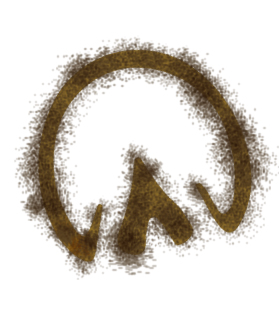Hay Everyone!
Brrrr! These past few weeks have been cold here in Central New Jersey. I spend much of my time munching hay and trying to stay warm. As you know, talking about food is one of my favorite pastimes. As I grab the next mouthful of hay, I also tell my pasture mates all about what I’m eating. All of this eating and talking about eating has gotten me wondering what you need to know about feeding your horse in the winter. I had my friends at the Equine Science Center give me a little help in coming up with all the answers!
Like any other time of the year, the foundation of your horse’s diet should be forage. Forages are things like pasture and hay that provide lots of fiber for the microbes in your horse’s gut to digest. In the winter, the grasses in the pasture are usually dormant, meaning they’re not growing, or buried under the snow. Because of these factors your horse is unlikely to be able to consume much forage from the pasture. You’ll need to provide plenty of forage in the form of hay. A horse should consume approximately 2% of its bodyweight in hay on a dry matter basis each day. I broke out the calculator and did a little math. What I found is that an average 1,000 lb horse needs to eat at least 20-25lbs of hay each day depending on the hay’s dry matter content. I’ll be talking to the staff at the farm here about refilling my hay feeder to keep me well fed. The numbers I calculated are the minimum a horse should be consuming, and you may need to increase this in the winter. As the temperature falls, horses and other animals expend more calories in keeping themselves warm. The exact temperature at which this happens varies based on many factors. This means a horse will need to eat more to maintain body condition and stay warm. Increasing the availability of forage is one of the best ways to keep your horse warm and well fed this winter because the process of fermenting the fiber in the forage is a heat generating process. This extra heat generated during fermentation will help keep your horse warm! If you want more details on feeding your horse in the winter, you can check our fact sheet on Winter Feeding For Horses.
In the winter, it is especially important to monitor your horse’s body condition score. A body condition score is a measure of how much fat your horse has. It is easy for a horse to lose weight in the winter without you noticing. This is especially true if your horse has a long winter haircoat or regularly wears a blanket. You’ll need to feel your horse on a regular basis to accurately obtain its body condition score. Any changes in weight or body condition score should be addressed immediately by starting to change your horse’s diet. Keep in mind, however, that dietary changes should be made slowly to avoid upsetting your horse’s digestive system and causing colic. Extension Horses has some cool resources on body condition scoring in horses including a list of apps you can use to learn body condition scoring.
Hydration is another key component of keeping your horse healthy in the winter. Horses cannot use snow and ice as a source of water in the winter. You’ll need to provide a source of fresh, unfrozen water. This might mean you have to routinely break and remove the ice from your horse’s water trough or buckets. Another option is to use a heater in the water trough or bucket to keep it from freezing over. If you opt for a heater, you’ll need to check it daily to make sure it’s working properly. An improperly installed heater can cause to your horse to receive an electrical shock each time it tries to drink. (Eek! It makes my hair stand on end and my whiskers tingle just thinking about it.)
With a little bit of work and planning, you’ll have no problem keeping your horse well fed and hydrated this winter! I’m off to make the rounds and make sure there is plenty of hay in my feeder and fresh water in my water tank. If there’s not, my friends at the Center will be hearing about it!
Until Next Time.
Your Friend,

Lord Nelson

